It’s that time of year again where we all must start thinking about submitting our French tax returns.
Here are my 5 top tips for completing your tax return.
By Michael Doyle
This article is published on: 7th March 2023

It’s that time of year again where we all must start thinking about submitting our French tax returns.
Here are my 5 top tips for completing your tax return.
1. Gather all necessary documents: Before you start preparing your tax return, make sure you have all the necessary documents, such as your income statements, receipts for deductible expenses, and proof of any tax credits you may be eligible for, the figures taken from your bank account(s) and the relevant exchange rate(s).
2. Choose the right form: France has different tax forms for different types of taxpayers, so make sure you choose the right one. In general most people will need to declare their income on the main form (2042) and its related forms (2042C and 2042 pro), the 2047 for all foreign income and the 3916 for foreign bank accounts and investments.
3. Fill out the form accurately: Take your time to fill out the form accurately and completely. Make sure you provide all the required information, including your income, expenses, and any tax credits or deductions you may be eligible for. Remember to declare all bank and investment accounts as any omissions can lead to high penalties.
4. Submit the form on time: The deadline for submitting your tax return in France typically falls in May each year. Make sure you submit your form before the deadline to avoid any penalties.
5. Consider getting professional help: If you are unsure about how to fill out your tax return, consider getting help from a tax professional. This can help ensure that your return is accurate and that you are not missing out on any tax benefits.
This is also a great time to review your own financial planning needs.
Due to recent uncertainty in the markets many people are keeping their money in the banks.
Purely for illustrative purposes (as inflationary pressures are currently decreasing), if inflation did persist at say 7% for 10 years your spending power would halve over this period. Inflation across Europe has been higher than this throughout 2022.
Now is a good time to speak with your financial advisor.
By Michael Doyle
This article is published on: 21st February 2023
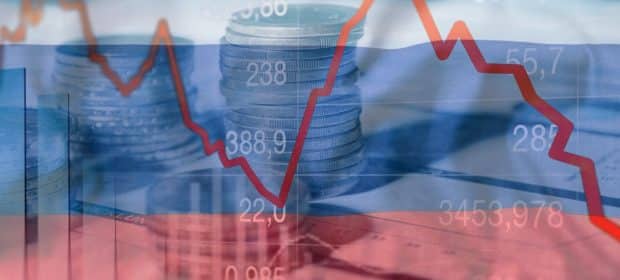
Russia’s invasion of Ukraine has had far-reaching consequences on the global investment market, with investors worldwide facing significant challenges in maintaining returns amidst the geopolitical turmoil. In this article, we will explore how the invasion has affected global investment returns.
On February 24, 2022, Russia launched a full-scale invasion of Ukraine, triggering a significant geopolitical crisis that has had a severe impact on global markets. The initial response was swift, with investors responding by selling off their assets, causing a drop in prices in equities and other asset classes.
Stock markets around the world experienced significant drops as investors scrambled to assess the situation’s severity, with some seeing declines of as much as 5% in a single day. The selloff was particularly severe in Europe, where the German DAX and the UK’s FTSE 100 both fell sharply. In the US, the S&P 500 and Dow Jones also fell significantly.
Safe-haven assets like gold, the Japanese yen, and the Swiss franc, saw significant inflows as investors sought to protect their portfolios from further losses. Bond yields also fell as investors sought refuge in safe-haven assets, with the yield on the 10-year US Treasury note dropping to 1.5%, its lowest level since November 2020.
Sector-wise, energy companies, particularly those with operations in Europe, were the hardest hit. Companies like Royal Dutch Shell and BP saw significant declines, as the invasion threatened to disrupt the flow of energy supplies from Russia to Europe.

Investors React to the Ongoing Crisis
Investors have been closely watching the situation in Ukraine, with market analysts suggesting that the ongoing crisis could have a significant impact on global investment returns. The potential for further escalation of the conflict, coupled with the possibility of economic sanctions on Russia, has left many investors concerned about the potential impact on their portfolios.
Several analysts have suggested that investors should remain cautious and avoid taking unnecessary risks. In particular, those with exposure to companies that could be adversely affected by the ongoing crisis should be prepared to re-evaluate their investment strategies.
At the same time, some investors have seen opportunities in the market downturn, with some taking advantage of the lower prices to buy into equities that have been undervalued as a result of the crisis. This approach, however, requires a significant degree of caution, as the situation in Ukraine remains highly volatile, and the market could continue to experience significant swings.
Conclusion
The ongoing conflict in Ukraine has had a significant impact on global investment returns, with markets worldwide experiencing significant declines in response to the invasion. While some investors have seen opportunities in the market downturn, most have adopted a cautious approach, wary of the potential risks posed by the ongoing crisis.
As the situation in Ukraine continues to unfold, it is clear that investors will need to remain vigilant and prepared to reevaluate their investment strategies at short notice. The geopolitical turmoil has highlighted the importance of diversification, risk management, and a long-term investment approach that can weather short-term market volatility
If you would like to review your current investments or wish to consider taking advantage of today’s markets then it is advisable to speak with your financial adviser.
By Michael Doyle
This article is published on: 22nd March 2021
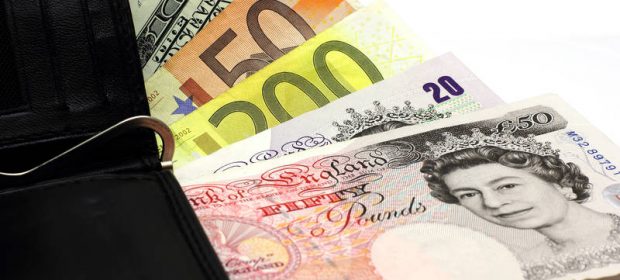
For citizens living in France, assurance vie is known to be one of the safest ways to invest money and organise your inheritance. It is an insurance instrument that serves as a tax-efficient investment vehicle containing one or more underlying investments.
Why It’s Considered Better Than the Bank?
In November 2020, the Banque de France told us that the average interest rate on bank deposits is 0.46%, unchanged since August 2020.
Any gain on your deposit would be subject (in general) to a 30% charge between tax and social charges, leaving a return on investment of just 0.32%.
Couple that with the fact that inflation in France in 2020 was 0.46% (www.statista.com) and you are effectively losing money by leaving it in your bank account.
A well-managed cautious portfolio held within an assurance vie returned about 4% in 2020.
Benefits of Inheritance
When you set up this form of investment before you turn 70, each beneficiary is entitled to a tax-free deduction of €152,500 for money invested before you turn 70, with taxes limited to 20% for everything beyond that (although sums exceeding €700,000 per beneficiary are subject to a higher tax rate of 31.25%).
Why Should You Invest in Assurance Vie?
Investments held within an assurance vie grow income tax and capital gains tax free, so you have a gross roll up of any gains within the investment.
Tax and social charges are paid only on withdrawal, however as part of the return is capital much of these gains are offset.
Advantages for Foreigners
If you are a foreign national living in France, assurance vie should be a key investment, particularly if you expect to live there for the long term. As a British expatriate living in France, you have a host of international assurance vie policies at your disposal, most of which are Brexit-proof. Not only are these policies consistent with the European Union rules, but they also operate across borders in the United Kingdom, meaning you can take them with you if you change your home again or go back to the UK.
By Michael Doyle
This article is published on: 18th March 2021
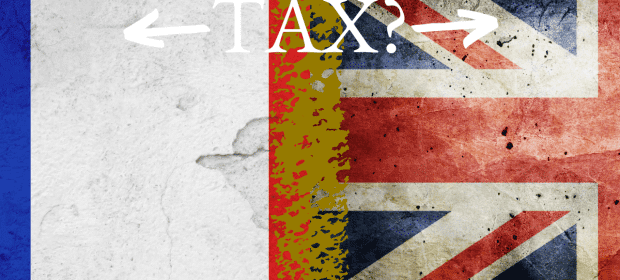
Is the dream of waking up every day to a breakfast of freshly-baked bagels as you look at the Eiffel Tower from your Paris balcony beckoning you? Okay, this might not be exactly what life for the average French resident is like, but living in France often holds appeal for those on the other side of the channel.
Just make sure that the new rules and regulations brought in after the United Kingdom’s exit from the European Union don’t catch you out when you move and pay tax somewhere new.
In this series of articles, we’ll be covering a range of tax issues, starting with how to know where you’re a tax resident.
Being a tax resident in France
To be considered a tax resident in France, it must be your “main home.” If this doesn’t apply to you, there are four other conditions that determine whether you can be classed as a tax resident:
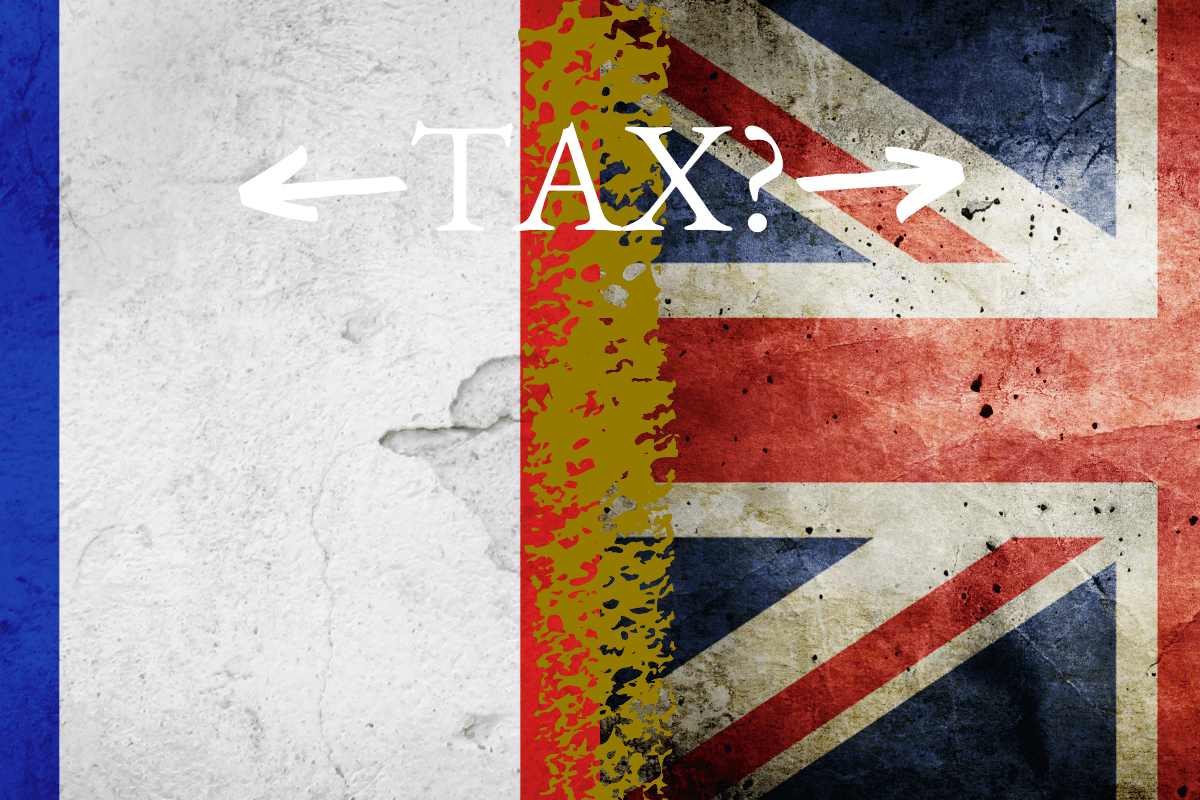
Being a tax resident in the United Kingdom
The same basic principles apply for determining whether you’re classed as a tax resident in the United Kingdom. Your eligibility depends on where you fall in the Statutory Residence Test, which involves three parts: the automatic overseas test, automatic residence test, and sufficient ties test.
These first two tests are pretty simple and involve a few components assessing how many days you spend in and out of the country. However, the sufficient ties test is a little more complex, with various conditions that can be classed as your ties:
These aspects all have their own complicated definitions, so it’s best to consult a specialist for more specific advice.
Where are you a resident?
Thanks to the Double Tax Treaty between the UK and France, it’s only possible to be a tax resident of one country at any given point. Plus, in addition to both countries’ criteria, the Tax Treaty has its own “tie-breaker” rules.
Relying on your own interpretation of the criteria or your predictions for where you’ll spend the most time in the future is riskier than you might think. Unexpected circumstances like illness can alter your plans, and you may misinterpret the rules or definitions set by authorities.
As you can see, although figuring out where you’re a tax resident sounds simple, it can be complicated if you’re frequently moving between and conducting business in both countries. To protect your finances and your peace of mind, it’s best to arrange an appointment with a professional.
By Michael Doyle
This article is published on: 16th March 2021

With today’s economic environment of record low interest rates and high inflation, it’s crucial to understand your investing options. This article will clarify what you need to know about investing as an expat living in France and how we are here to help you.
First, what are your investment objectives? Do you want to preserve your wealth and continue its growth trajectory? Then we recommend reviewing tax efficient savings and investment insurance policies. These can be linked to a whole range of investment assets, from fixed interest securities and bonds, to developed or emerging market equities, specialist funds investing in soft commodities like agriculture or hard commodities like gold and silver, and lastly, alternative investments.
Which investments fit your portfolio best depends on the amount of risk you are willing to take and what kind of returns you are seeking. So, let’s break down the specifics you need to know when thinking about your portfolio.
• Fixed Interest Securities and Bonds are a form of lending that governments and companies may use as an alternative way to raise funds. When you buy a share in a company you own a small part of that company, when you buy fixed interest securities, you become a lender to the issuer. The benefits may include protection during market volatility, consistent returns and potential tax benefits. Some downsides include potentially lower returns, interest rate risk, and issues with cash access.
• Developed Market Equities are international investments in more advanced economies. The benefits include investing in a mature economy that has greater access to capital markets. Drawbacks include more expensive market valuations and potentially less upside.
• Emerging Market Equities are international investments in the world’s fastest growing economies. Some benefits include the potential for high growth and diversification. The potential downsides include exposing yourself to political, economic, and currency risk depending on which countries you choose to invest in.
• Specialist Fund Investing is ideal for investors seeking exposure to specific areas of the market without purchasing individual stocks. One popular area is natural resources, with the three major classifications of agriculture, energy, and metals. A benefit to investing in commodities is that they’re completely separate from market fluctuations so it diversifies your portfolio and offsets stock risks while providing inflation protection. However, commodities can be exposed to uncertain government policies.
• Alternative Investments are financial assets that do not fall into one of the conventional equity, income, or cash categories. Examples include: private equity, hedge funds, direct real estate, commodities, and tangible assets. Alternative investments typically don’t correlate to the stock market so they offer your portfolio diversification but can be prone to volatility.
Overall, it’s important to have a diversified and balanced investment portfolio so understanding each category is key. Keep in mind that when it comes to investing, advice is not one-size-fits-all. That’s why we are here to help personalise your investment portfolio to match your specific needs.
In today’s financial climate it is vital to understand your investing options. Many experts have a positive outlook as vaccine distribution increases and fiscal stimulus boosts economies. Intelligent investing is essential when building and maintaining wealth so consult with your Spectrum IFA financial adviser and start planning today!
By Michael Doyle
This article is published on: 15th March 2021
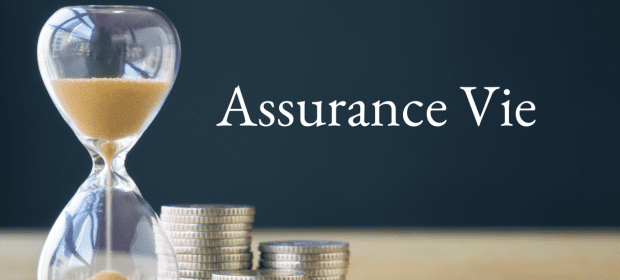
Many people are looking for an alternative to setting up a regulated pension for their retirement savings. Whilst there is tax relief on pension contributions in the savings phase, they are happy to give this up for more flexible and tax-effective income during retirement. In France, the most popular vehicle used for long-term savings is a contrat d’assurance vie, in which investors have the opportunity to invest regular premium savings or a temporary amount.
What Is an Assurance Vie?
An assurance vie is an insurance-based investment that can be as straightforward or as nuanced as you like. The following are the benefits of assurance vie for French residents:
Assurance vie is the traditional form of saving for millions of French citizens. Several billions of euros are invested by French banks and insurance firms that sell their own branded products.
Additionally, a much smaller group of non-French companies have designed French-compliant policies for the expatriate market in France. These businesses are generally located in heavily regulated financial hubs like Dublin and Luxembourg.
However, before selecting such a firm, make sure that it is a product completely compatible with French law to get the same tax and inheritance benefits as the French equivalent product.
Below are some of the benefits of a foreign assurance vie policy over a French assurance vie policy:
When it comes to EU countries, the taxes can be confusing. In these jurisdictions, the plan is often accepted for its beneficial tax performance.
How Does Assurance Vie Work?
Your one-time or regular investment or premiums are paid to an insurance firm, which then invests the funds with the investment managers of your choosing. These are typically unit-linked investments, such as equity or bond funds, but they may also be deposits or unique products sold by different financial institutions.
You may invest in a range of funds which the insurance provider can pool together to create a mutual bond, which is your assurance vie policy. The value of the units you keep in managed funds is likely to increase over time if you have selected your investment wisely.
As a consequence, the value of your assurance vie policy will grow accordingly. You must, however, be fully conscious of and comfortable with the level of risk you are taking. As with any unit-linked investment, your fund’s value will go up or down depending on what is happening in the investment markets. Short-term market instability, on the other hand, typically has a lower impact over time
How Do I Choose What to Invest Inside My Assurance Vie?
You may hold strong opinions on the subject or have no opinions at all. In any case, having an excellent financial planner on hand is helpful. His or her job is to help you comprehend the full definition of investment and decide your attitude toward investment risk.
Without acknowledging any risk, there is little reasonable chance of making a significant return on your savings. Even leaving your savings in a bank these days carries the risk of not receiving a ‘real’ rate of return, i.e., one that keeps up with inflation.
An adviser can show you various types of investment options, clarify how they operate, their track record, and the nature and level of risk that the investment entails. Although you make the ultimate decision, his or her support may be helpful.
Following the initial investment, there should be regular follow-up meetings to assess your investment’s success and make any appropriate adjustments. This may be because your circumstances have changed or because certain funds aren’t performing as well as anticipated, and you’d like to replace them with funds that are.
Can Capital Be Guaranteed Via a French Assurance Vie?
The willingness to invest in a fonds en euros is a common feature of the French assurance vie (though this is also available, in limited circumstances, from insurance companies outside France).
Since your money, as well as any interest and year-end bonus applied to it, is guaranteed, this unique type of fund is structured to shape a very conservative base for your overall investment.
The majority of foreign companies that supply these forms of funds also provide sterling and US dollar equivalents. Intending to increase returns, the funds invest mainly in government and corporate bonds, with some exposure to equities and assets (real estate). Your money will earn interest over the year.
The insurance firm is allowed by statute to refund the bulk of the funds to your account in the form of a year-end bonus. The remaining portion of the fund’s return is kept in the insurance company’s reserves to smooth out potential investment gains, such as in periods of weak market results. However, the rate of return on the fonds en euros is ordinarily low due to the quality of the guarantees. Still, it is generally better than the interest received on a bank deposit account with immediate access.
However, the French tax authorities consider this form of a fund to be so without risk that annual social charges are imposed on the gain, potentially lowering the return rate over time.
It is also possible to invest in structured bank deposit offerings through some foreign assurance vie policies. The investment return is related to the stock market, but the capital invested is guaranteed.
How Is an Assurance Vie Taxed?
Only the benefits portion of every amount you withdraw is taxable, and after January 1, 2018, the tax treatment differs depending on whether premiums were charged before September 27, 2017, or after that date.
Premiums paid before September 27, 2017
You may either be taxed at the set prelevement rate or file an annual income tax return, depending on your tax situation. The following is how the prelevement scale works:
Furthermore, social charges are imposed on the benefits portion of the amount withdrawn, at a rate of 17.2 percent. People prefer the progressive rate tax if it is lower than their marginal rate of income tax.
In France, the highest income tax rate is officially 45 percent. As a result, even though 35 percent appears to be a high rate, it is still the best choice for higher-rate taxpayers. After four years, you’ll have to reconsider which form to use. If your marginal tax rate is at least 30 percent, a prevelement rate of 15 percent is a better choice.
If you are a non-taxpayer (as more people are now since the 5.5 percent tax bracket was eliminated), you can opt to report the withdrawal on your annual income tax return.
After eight years, there is an extra income tax incentive to encourage people to save more for the long term. A single taxpayer is entitled to a €4,600 income tax credit against the benefits portion of any withdrawals made during the tax year. This is raised to €9,200 for married couples who are subject to joint taxation. There will be no income tax to pay if the benefits portion of total withdrawals made during the year does not surpass the allowances.
This might not seem like much, but it’s a valuable allowance, as shown by this example of Peter and Pam’s assurance vie policy, which they began nine years ago with a €100,000 investment. They have not taken any withdrawals, and the account is now worth €160,000. They want to buy a new car and need €15,000 to help pay for it, so they withdraw this amount. They receive a tax certification from the insurance firm when they make this withdrawal, showing how much gain is included in the amount withdrawn. The guaranteed value has risen by 60%, but the taxable benefit factor is only 37.5 percent (or €5,625) in this case. Since they have a tax-free allowance of €9,200 and they are subject to joint taxes, there is no income tax to pay.
Premiums paid from September 27, 2017
The tax rate varies based on the contract’s duration, plus whether capital remaining in the contract as of December 31 of the year before the withdrawal was above a threshold sum for contracts longer than eight years. The threshold amount is €150,000 per person (across all assurance vie policies), measured by the amount of premiums invested minus any money already withdrawn, rather than the contract’s value. Couples taxed as a household cannot share each other’s threshold because the threshold is not cumulative between individuals. As a consequence, one spouse can meet the threshold while the other does not.
On January 1, 2018, France adopted a 30 percent flat tax,’ consisting of 12.8 percent income tax and 17.2 percent social charges. As a result, for contracts that are less than eight years old, a flat tax is levied on gains in withdrawals which are deducted automatically by the insurance provider. The flat tax replaces the pre-September 27, 2017 rate of 52.2 percent (35 percent tax plus 17.2 percent social charges) for contracts of up to four years and 32.2 percent (15 percent tax plus 17.2 percent social charges) for contracts of four to eight years.
After eight years, the tax rate is 7.5 percent. In addition, there is 17.2 percent social charges to pay. The tax free allowance of €4,600 for a single taxpayer or €9,200 for a couple is still in place after eight years. When filing their French tax return, taxpayers can also choose to pay tax at their marginal rate in the ordinary income tax brackets (rates varying from 0-45%) plus social charges. Any excess tax already charged would be refunded after processing the tax declaration made in the year after payment of the withdrawal since the insurance provider will have already deducted 12.8 percent or 7.5 percent.
However, taxpayers should be mindful that if ordinary band taxation is selected for assurance vie dividends, this will extend to all other sources of investment profits, such as interest and persons, as well as capital gains from the selling of shares.
Does Assurance Vie Have Other Advantages?
Without question, assurance vie is also a powerful tool for estate planning, both in reducing French inheritance taxes and giving you leverage over who inherits your properties after you die. This form of investment is considered outside of your estate for
When you set up this form of investment before you turn 70, each beneficiary is entitled to a tax-free deduction of €152,500 for money invested before you turn 70, with taxes limited to 20% for everything beyond that (although sums exceeding €700,000 per beneficiary are subject to a higher tax rate of 31.25 percent).
The inheritance benefits are limited for sums invested after the age of 70. There is a €30,500 tax-free exemption in this situation (plus the investment return on the total invested) for all of the people who profit from it. Any portion of the premium that reaches €30,500 is subject to regular French inheritance allowances, which differ based on the beneficiaries’ connections to the policyholder. Any gain in the scheme paid out as a death benefit is also subject to social taxes at the current rate of 17.2 percent.
Assurance vie can be a valuable tool for estate planning and providing a tax-efficient source of income for the policyholder over his or her lifetime.
By Michael Doyle
This article is published on: 8th March 2021

We often get asked the question, “When is the best time to invest my money?” Our answer is never based around when you should invest, but rather how long you can invest for.
• No one can predict the top or bottom of any market.
• The market has always exceeded its previous high when it has recovered.
So the question is not when you should invest your money in the market, but how long can you stay in the market to achieve your financial goals? Or to put it more simply, time is more important than timing.
During periods of stockmarket volatility, investors often become uncertain and lose sight of their initial long-term investment view. They often find themselves postponing a new investment, or even selling their current holdings with a view to re-invest when the markets stabilise.
What often happens in times of trouble, however, is that investors sell at a lower price than that which they bought at.
A study by Dalbar in Boston USA, highlighted a key area for private investor’s underperformance:
• According to Dalbar, from 1985 to 2004 the average personal investor achieved an annualised return of just 3.7% while the S&P500 returned 11.9% and inflation averaged 3%
A further study showed that playing the waiting game could cost you dearly. Investors who remained fully invested in the UK market over the period March 2003 until March 2008 would have received returns in excess of 60%. However, those investors who tried to time the markets would have had their returns cut to 40% if they missed out on the best 10 days of the market and those who missed out on the best 40 days would have seen returns of 4%!
This applies across other major markets as the table below shows:
| MARKET | INDEX | FULLY INVESTED | MISSING BEST 10 DAYS | MISSING BEST 40 DAYS |
| UK | FTS All Share | 63.4% | 40.0% | 3.9% |
| US | S&P 500 | 56.4% | 11.6% | -39.2% |
| GLOBAL | MSCI World | 63.7% | 21.6% | -26.2% |
Sources: JP Morgan Asset Management/Bloomberg/Datastream
What we do know is that historically the markets have always recovered, as the table below shows.
| EVENT | DATE | RESPONSE | AFTER 4 MONTHS |
| Pearl Harbour* | December 1941 | -6.5% | -9.6% |
| Korean War | June 1950 | -12% | +19.2% |
| JFK Assassination | November 1963 | -2.9% | +15.1% |
| Arab Oil embargo | October 1973 | -17.9% | +7.2% |
| USSR in Afghanistan | December 1979 | -2.2% | +6.8% |
| 1987 Financial Panic | October 1987 | -34.2% | +15% |
| Gulf War | December 1990 | -4.3% | +18.7% |
| ERM Currency Crisis | September 1992 | -6% | +9.2% |
| Far East Contagion | October 1997 | -12.4% | +25% |
| Russia Devalues Rouble / Long Term Capital Management Crisis |
August 1998 |
-11.3% |
+33.7%
|
| World Trade Centre | September 2001 | Dow -14.3%
Nasdaq -11.6% |
+5.9%
+22.5% |
*(The markets rose 8% during the year following Pearl Harbour)
Essentially what we can conclude is that most investors do not buy and hold for extended periods of time. Thus getting in and out of the market at the wrong times or switching funds with a view to chasing the top performers, unfortunately at a time when these ‘top performers’ have reached their peak.
Almost without exception, successful investment strategies rely on discipline, patience and taking a long-term view. Successful investors typically neither react to short market events, nor try to pre-empt short term market direction.
For advice on an investment solution aligned with your personal objectives and risk profile, feel free to contact me for an initial discussion.
By Michael Doyle
This article is published on: 4th March 2021

Are you planning on retiring in France or Luxembourg but have a pension in the UK?
Look no further than this article as we guide you through your options. Pensions are a pinnacle part of your retirement plan but can be a complex topic for British expatriates with rules frequently changing, so always consult with your financial adviser when deciding which plan best suits your needs.
First off, you can leave your pension as is in your existing UK pension scheme if you want. However, with the Brexit decision, you should check with your UK financial adviser and make sure they can still support you. If you want to move your funds to an international pension plan, then your best options may be opening a QROPS or SIPP account.
QROPS (Qualified Recognized Overseas Pension Scheme) allows foreign nationals who have worked in Britain to transfer their UK pensions overseas.
SIPP (International Self-Invested Personal Pension) enables someone access to greater investment choices because it is a personal pension plan based on making your own decisions. However, the pension structure is based in the UK so it’s subject to any legislative changes made by the UK government.
Benefits include, but are not limited to:
You can also try a combination between both UK and international pension plans. The main objective is to arrange your retirement in a manner where you can access your finances when you want, where you want, and in the currency of your choice. Overall, there are many things to consider when choosing your pension plan, so be sure to do your research and understand your different options before making any decisions.
It is in your best interest to act now when planning your pension scheme, so touch base with your financial adviser today to discuss your options.
By Michael Doyle
This article is published on: 28th November 2016
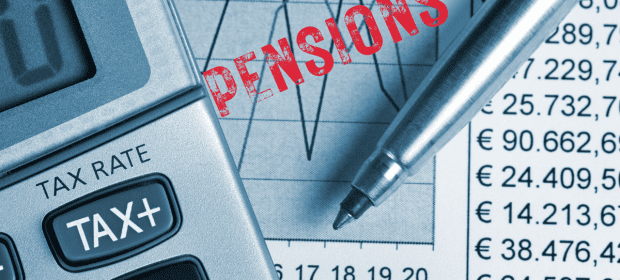
I was recently asked to review one of my client’s UK pensions.
He had what is known as a Defined Benefits Scheme – more commonly referred to as a Final Salary Scheme.
My client had lost touch with this scheme a few years back and the last update he had from them was in 2006. On this statement the scheme offered him a transfer value of approximately £52,928, otherwise he could remain in the scheme until he was 65 and have a pension commencement lump sum (PCLS) of c. £27,000 and an income of £4,700 per annum.
If he remained in the scheme and took the lump sum and income, in the event of his death there would be no lump sum paid to his beneficiaries although an income payment of around £3,000 per annum would have been paid until the 10th anniversary of his 65 birthday.
On completing a review of my client’s pension I found that the scheme would now offer a transfer value just in excess of £180,000. In transferring this to a Qualifying Recognised Overseas Pension Scheme (QROPS), I was able to offer my client an initial PCLS of £45,000. This still left him with a fund of £135,000. Assuming we can provide a rate of return of 3.5% after charges then the client can have the same income as with his Final Salary Scheme.
Assuming the client only draws down the same £27,000 that his UK pension offered then we would only have to provide returns of 3.07%.
In the end, the client chose the transfer because:
With annuity rates being very low at this time, final salary schemes are offering a much higher transfer value and this can be beneficial for both you and your beneficiaries.
To review your pension options today please contact me for a no obligation chat and free analysis on your personal situation.
By Michael Doyle
This article is published on: 6th November 2014

Two of the main concerns many of my clients have whilst living in Luxembourg are:
At the moment, as most of you will already know, whilst leaving your funds to accrue in a bank account in Luxembourg you can receive interest of around 1%. However, due to the European Savings Directive, you lose 10% of this as a tax, thus you will receive around 0.9% interest net.
Putting this in perspective, most of us have to save for the future, either for our pension provision or for our children’s further education. Based on the Liverpool Victoria Study in November 2007, it said that University costs increase at approximately 7.5% per annum (the current level of inflation for educational costs). This was further supported by an article in The Sunday Telegraph, (26th August 2007), which stated:
“School fees have risen 41% in the past 5 years”
Fees at many universities in the UK now stand at £9,000 per annum.
So the question we have to ask ourselves is whether or not by leaving our money in the bank, will we be able to meet all of our future goals?
One solution is to look at saving through a Life Assurance wrapper.
A wrapper is effectively an “investment platform” through which an enormous range of underlying investments can be purchased. Whilst the wrapper will be provided by a life assurance company, it is important to note that you are not paying a premium to purchase additional life assurance. It is, to all intents and purposes, an investment contract.
So what are the benefits of saving within a wrapper here in Luxembourg?
Every person’s circumstances are different and you should always seek Independent Advice before making any investment decision. Here at The Spectrum IFA Group we offer a no obligation Financial Review before offering any advice.